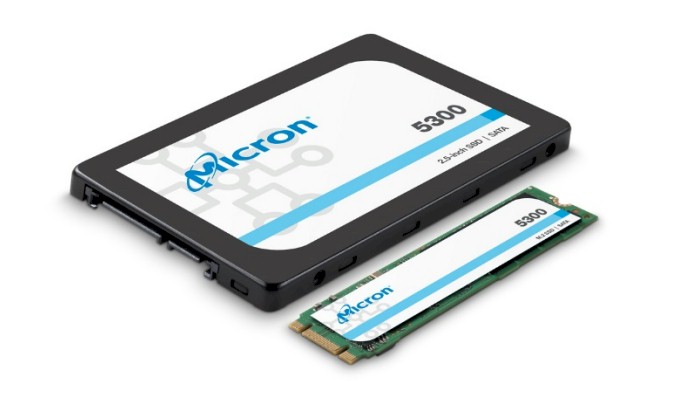
We have nothing against disk drives. Seriously. And in fact, we are amazed at the amount of innovation that continues to go into the last electromechanical device still in use in computing, which from a commercial standpoint started out with the tabulating machines created by Herman Hollerith in 1884 and used to process the 1890 census in the United States, thus laying the foundation of International Business Machines. Which, not coincidentally, created the first magnetic storage drive, a rotating drum called RAMAC, in 1956 and which was an innovator in disk storage for decades before it sold the business off to Hitachi in 2002 and which was acquired by Western Digital in 2012.
That said, we do believe that in the fullness of time, given the substantial benefits that come from using non-volatile memory as primary storage instead of disk drives, most enterprise datacenters will move most of their storage to flash. And yes, we know that Seagate Technology and Western Digital keep pushing the envelope on the capacity of their drives, which are kissing 20 TB of capacity these days, with all kinds of innovation. But it is the hyperscalers and cloud builders of the world who are going to drive the need for the cheapest storage in the future, not enterprise datacenters, and these are for uses where I/O is not as critical as the economics of storage. Disk drive IOPs are pretty terrible, and given the electromechanical nature of how they work, there is not going to be any getting around that. And hence, in the long run, we are done. Maybe not the hyperscalers and the cloud builders, who have more intense economic pressures, but enterprises for sure.
Predicting when the all-flash datacenter – and we don’t mean literally all-flash so much as non-volatile memory of some sort or another used for primary or Tier 1 storage – is a bit difficult, like predicting when we will have the paperless office or the tapeless datacenter or when the last IBM mainframe will finally be turned off. These seem to be perennial conversations, and technologies have a habit of persisting even when competing technologies enter the glasshouse because they find new roles as well as hold onto some of their old ones.
During Micron Technology’s announcement of its 176-layer NAND flash memory this week, which is why we are bringing this up at all, Derek Dicker, general manager of Micron’s storage business unit, had a chuckle but would not put a stake in the ground about when disk drives might be shunned from the datacenter.
“That would be a bit too much of a crystal ball prognostication for me to make,” Dicker explained. “I would say that storage itself is interesting in that we always seem to find new tiers of storage over time given how technology evolves, I think it is still going to be a ways. But as you see in the graph of HDD decreases and SDD increases, the trajectory is very, very clear. In terms of just all flash and the removal of rotating media, I don’t think we will a particular window of time, but we are particularly excited about the fact that over time we continue to see a path to decreasing the cost per bit, which is really what helps to facilitate that trajectory.”
Here are the charts that Dicker was referring to:
The real question is not so much as to when will datacenters stop using rotating media, but rather when will it no longer be economically feasible to make electromechanical devices of a certain capacity at a certain price, and when will the etching processes to make flash memory – and indeed, any chips at all – also run out of gas. It is not entirely unlikely that both hit the wall at about the same time, and we think very broadly that will happen sometime between 2025 and 2030. Predicting out more than five years in the IT sector is dubious, and ten years is highly speculative almost to the point of silliness but often fun just the same because you really do need long term goals. As a wise man once said: “In the long run, men only hit what they aim at. Therefore, though they should fail immediately, they had better aim at something high.” – Henry David Thoreau, Walden.
Micron has been on quite a journey to take its memory expertise, turn it into a flash business, and help drive disks out of computers of all sizes and stripes.
Micron entered the market sixteen years ago, way back when 90 nanometers seemed very small dimensions for chip-making processes. The 176-layer NAND that Micron is announcing today and shipping in 512 Gb devices that are going into its Crucial brand of consumer SSDs to start is the fifth generation of 3D NAND chips out of the company and the second generation using its replacement gate (RG) architecture, which is distinct from the prior three generations of floating gate 3D stacked NAND memory. The first generation of 3D NAND from Micron had 32 layers, and the second stacked up two of these to create 64 layers. With the third generation, there were two stacks at 48 layers each, and with the first generation using the RG technique to create stacks of 3D NAND, there were two stacks at 64 layers each to get to 128 layers. This latter product line, which was taped out in October 2019 and which started shipping in April of this year, was developed by Micron alone (not with help from former partner Intel) and will probably be relatively short-lived in the market given that Dicker says the ramp for 176 layer chips will be much faster – and intentionally so.
By the way, that new 176 layer 3D NAND is actually two stacks running at 88 layers each, and given the progression of the 3D NAND generations, you would have only expected 80 layers each, so Micron did 10 percent better than its history would have expected, with the addition of 24 layers instead of 16 layers with this bump. Using the current 176L technique, Micron is able to put as many layers into the same physical height that was needed by its second generation 64L flash generation, which helps increase the storage density, and the CMOS under array (CUA) technique that puts the flash controller logic chip underneath the flash storage means that the die can be 30 percent smaller in size compared to having to put this logic beside the flash on the silicon layer as its competition has to do.
Dicker said that Micron was able to deliver about 40 percent higher layer count than its nearest (and unnamed) competitor, and added that the device was able to deliver a data transfer rate across the Open NAND Flash Interface (ONFI) bus of to 1,600 MT/sec, which is 33 percent higher than its 96 layer floating gate high volume NAND flash. The 176 layer flash also has a 35 percent better read and write latency compared to that same volume flash.
We are waiting to see how dense – and how inexpensive – the enterprise-class TLC flash cards and SSDs will be from Micron when they start shipping next year, and how the IOPS increase as the price drops. We expect somewhere around 15 TB in U.2 2.5-inch SSD form factors and about 3.5 TB in an M.2 gumstick form factor.

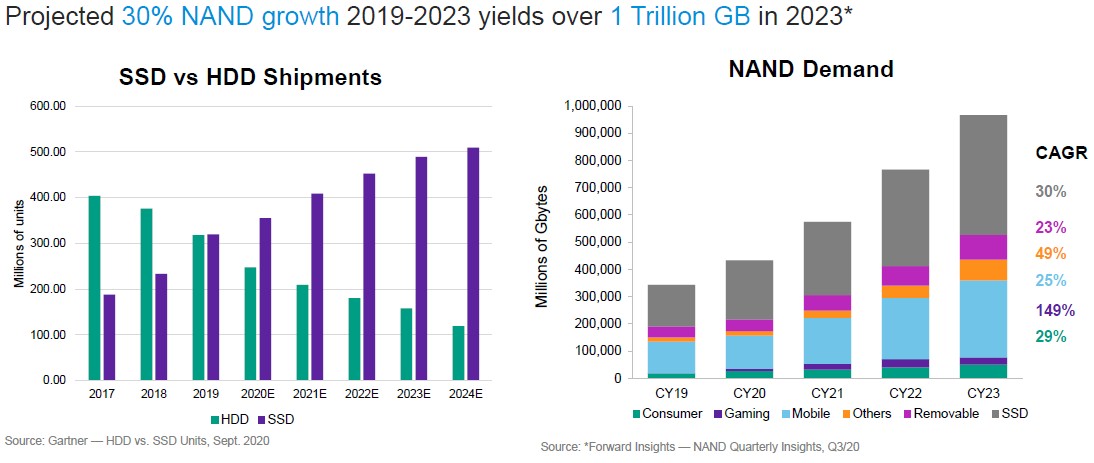
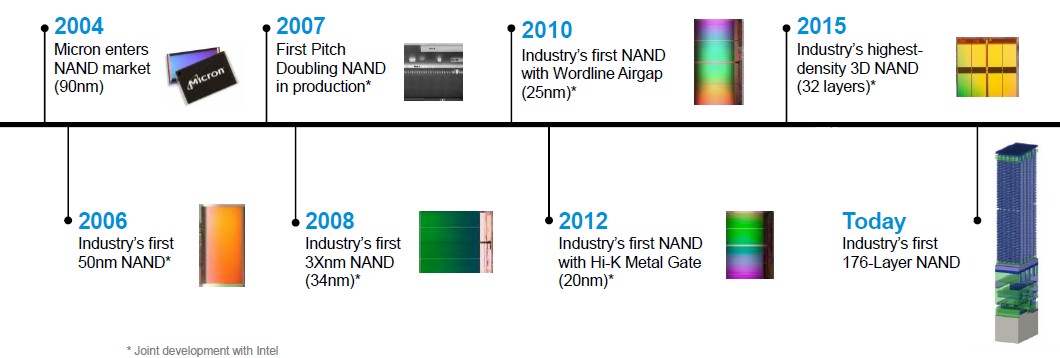
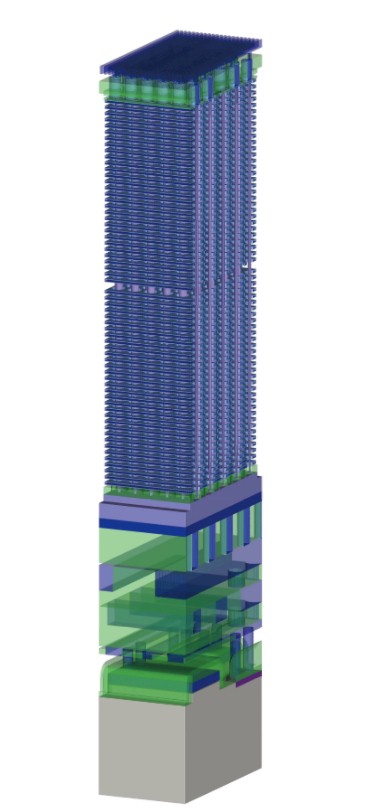



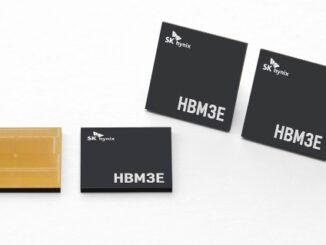
International Machines Machines?
I just don’t know.
Flash is the way to go. BUT
1) 90% of Storage bits sold today are HDD
2) NAND is more than 5x more expensive than HDD. Price crossover is around 2033
3) Datacenters still use some 15K/10K HDDs … even though it is not cost effective or high performance (its just a legacy). The performance HDD market should be zero… but it survives.
So the end result is that Cold storage and some warm will be HDD for many years AND Hot/warm will slowly move to Flash from HDD
we have presentations showing these numbers and scenarios
http://www.mkwventures.com
“… innovation that continues to go into **the last electromechanical device** still in use in computing, …” – I could think that meant that HDDs were the last electromechanical device, but optical jukeboxes came after, and are used to store petabytes of data.
There are also these **new** mechanical drives:
IBM: “LTO Ultrium 9 technology is coming in 1H 2021 available in all subsystems and stand-alone systems extending its capacity to 45TB per cartridge when compressed.”
Sony: “PetaSite Optical Disc Archive scalable library – A maximum total of five extension units can attach to the ODS-L30M to make up a single 42U library offering a maximum 535 cartridges (approx. 1.76 PB), depending on the extension units used.”
NASA is an example of one customer with such large storage requirements, which are well served by the capacity and capabilities of large mechanical storage.